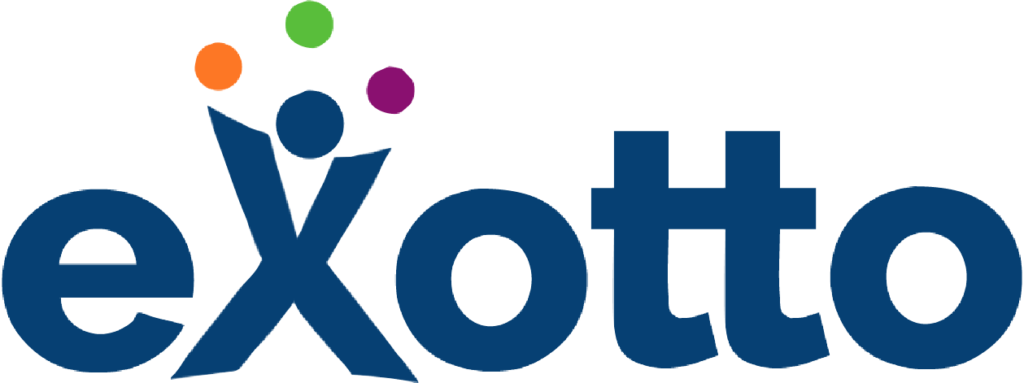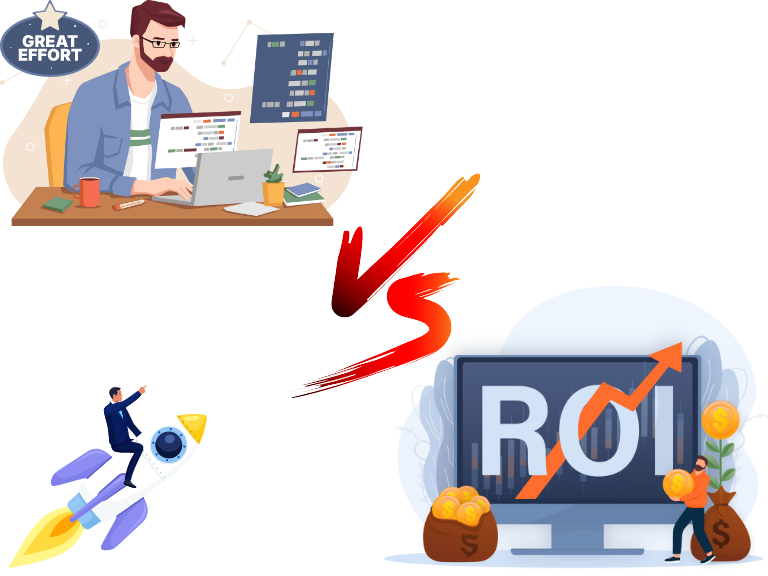Are you and your team pouring time, money, and energy into B2B lead generation, but the results are not matching the efforts? Do you feel like you’re doing everything right, but still not getting the ROI you expected? Many decision-makers find themselves stuck in a frustrating loop of endless campaigns, tools, and tactics to find quality leads. The challenge of measuring effort vs return in lead generation is important. The dilemma of where to allocate time, budget, and manpower is the challenge for every decision maker. It’s not just about generating leads but optimizing the ratio between the energy invested and the value yielded – a concept central to sustainable growth.
The lead generation efforts are complex, as it has many strategies, from email campaigns to webinars, content marketing to social media engagement, all for attention and resources. Moreover, the quality of B2B leads is the most important factor, as they are responsible for the business growth. In this scenario, evaluating the effectiveness of each strategy and choosing one to channel efforts for maximum return becomes a critical task.
You can personalize strategies to maximize B2B lead generation. But, Measuring effort vs. return in B2B lead generation can be challenging, but it’s crucial for optimizing your marketing efforts and ensuring a positive ROI.

Here's a step-by-step approach to help you tackle this problem:
1. Allocate Resources
Allocating resources involves determining the financial, human, and time-related investments you can make in your lead generation efforts. This step is crucial because it sets the foundation for your entire strategy. You need to assess your budget for ad spend, content creation, tools, and personnel costs. Consider your team’s skills, capacity, and the time you can dedicate to lead generation activities.
2. Lead Scoring
Lead scoring is a system used to rank and prioritize leads based on their potential to convert into customers. There are many lead scoring tools in the market. By assigning values to different engagement levels (such as website visits, email opens, and content downloads) and demographic factors (industry, company size, job role), you can identify which leads are more likely to bring a higher return on investment. This helps you focus your efforts on leads more likely to convert.
3. Conversion Tracking
Conversion tracking involves implementing tools and mechanisms to monitor the entire lead generation process. This includes tracking a lead’s journey from their first interaction with your brand to their final conversion. Tools like Google Analytics, CRM systems, and marketing automation platforms enable you to gather data on various touchpoints and analyze how leads move through the sales funnel.
4. Calculate ROI
Return on Investment (ROI) is a critical metric that quantifies the effectiveness of your lead generation efforts. To calculate ROI, compare the resources (financial, human, and time) invested in each lead generation channel with the value of the leads generated through those channels. By analyzing which channels yield the highest ROI, you can make informed decisions about where to allocate resources for maximum return.
5. A/B Testing
A/B testing involves experimenting with different approaches within your chosen lead generation channels to determine which variations perform better. For example, you might test different email subject lines, ad visuals, or call-to-action buttons. By systematically comparing these variations and measuring their impact on conversion rates, you can optimize your efforts and refine your strategies for higher returns.
6. Conversion Rate Optimization (CRO)
Conversion Rate Optimization focuses on enhancing the likelihood that a lead will take the desired action, such as filling out a form or requesting more information. This step involves optimizing landing pages, forms, and the overall user experience. Even small changes, like adjusting the placement of a CTA button or simplifying a form, can significantly improve conversion rates, leading to better returns on your efforts.
7. Data Analysis and Iteration

Regularly reviewing the data you’ve collected from various lead generation activities is crucial. Analyze the results of your efforts, identify trends, successes, and areas for improvement. This data-driven approach allows you to iterate on your strategies, enhancing what works and adjusting what doesn’t, ultimately leading to better effort-to-return ratios.
8. Benchmarking
Benchmarking involves comparing your lead generation efforts and results to industry standards and best practices. By understanding where you stand with your peers, you can understand whether your efforts are performing well or if adjustments are needed to achieve better returns.
9. Long-term Strategy
B2B lead generation is not always a short-term game. Sales cycles are typically more extended due to the complexity of decisions involving multiple stakeholders, larger investments, and complex evaluations. Understand that results might not come overnight, and prepare for a journey that requires time and dedication.
Remember, the key is to strike a balance between effort and return. Some channels might require more initial effort but yield higher-quality leads, while others might be more efficient but with lower conversion rates. By analyzing data and continuously optimizing your strategies, you’ll be better equipped to measure the effectiveness of your efforts and adjust your approach accordingly.
Conclusion
At the end of the day, lead gen shouldn’t feel like a never-ending grind- moving fast, but getting nowhere. When you step back and really look at what’s working and what’s just keeping you busy, you start to see patterns. The highest returns often come from clear messaging, smart targeting, and consistent follow-ups, and not by just throwing more time, money, or tools at the problem.
It’s not about doing more. It’s about doing what matters. If you’ve been feeling stuck in the effort-vs-return loop, maybe it’s time to pause, reassess, and simplify. The right strategy will save your team time, bring in better leads, and most importantly, make your hard work worth it.
Contact Exotto today to make your lead generation process smoother and get the return on your efforts!
Key Points
- Optimize ROI through resource allocation, lead scoring, and tracking.
- Embrace a patient, long-term strategy for sustainable B2B growth.

